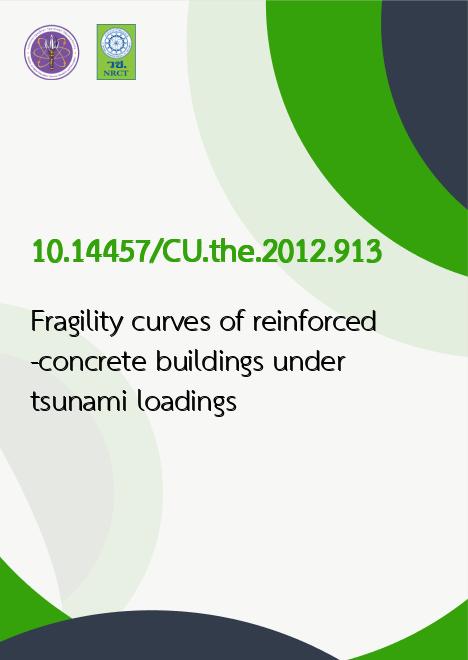
|
Fragility curves of reinforced-concrete buildings under tsunami loadings |
|---|---|
| รหัสดีโอไอ | |
| Title | Fragility curves of reinforced-concrete buildings under tsunami loadings |
| Creator | Piyawat Foytong |
| Contributor | Anat Ruangrassamee, Panitan Lukkunaprasit |
| Publisher | Chulalongkorn University |
| Publication Year | 2555 |
| Keyword | Buildings, Reinforced concrete, Tsunamis, ปริญญาดุษฎีบัณฑิต, อาคารคอนกรีตเสริมเหล็ก, สึนามิ |
| Abstract | Tsunamis caused damage to many buildings and killed people in many countries in the world. To prevent and reduce structural damage in the future, the understanding of building responses under tsunamis and the development of fragility curves are needed. The fragility curves currently developed from field observations and remote sensing are insufficient to represent structural behaviors in details. In this study, the responses of a generic one-story reinforced concrete building are analyzed to understand behaviors of a building under tsunami loading. Then, the tsunami fragility curve is developed from a series of detailed analyses. The tsunami flow velocity, which is a key parameter in determining hydrodynamic force, is studied by analyzing videos recorded in the March 2011 Tohoku, Japan tsunami. The analyzed velocities fall in the range of to . A generic building model is developed from the average values of the structural indices of residential houses in Southern Thailand. The components of the building model are calibrated with experimental results. The 3-dimensional building model of the former office of Thai Meteorological Department, which is a one-story reinforced-concrete building, is analyzed. In the building model, masonry infill walls are idealized as horizontal springs, and plastic hinges are modeled by non-linear fiber elements. The good agreement between the test and analysis is obtained in terms of initial stiffness and deformations. The generic building is analyzed to capture responses under tsunami hydrodynamic forces. At each inundation depth, the lateral force is increased until collapse. From the analysis results, the resistance of the building is controlled by the shear failure of columns at inundation depths lower than 2.57 m. As an inundation depth increases, locations of loads move higher and the flexural failure occurs in the building. When the tsunami reaches the beam level, the flexural failure occurs even at the tsunami flow velocity lower than . For the building responses with masonry infill walls, walls enhance the lateral resistance represented in terms of the momentum flux of the hydrodynamic force acting on the building. In developing the fragility curve, the uncertainty of compressive strengths of concrete is assumed as the normal distribution, and the tsunami flow velocity is considered in the range from to . The developed tsunami fragility curve shows that the building does not collapse for an inundation depth less than 1.8 m and collapses for an inundation depth higher than 3.2 m. |
| URL Website | cuir.car.chula.ac.th |